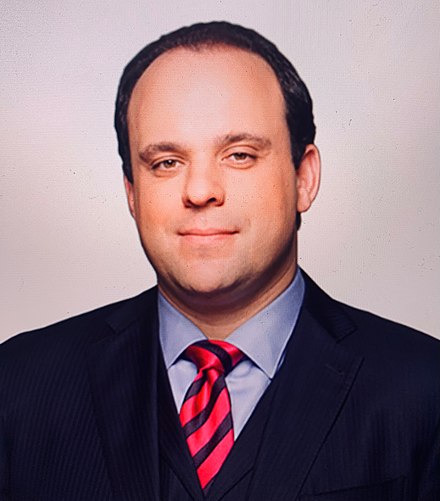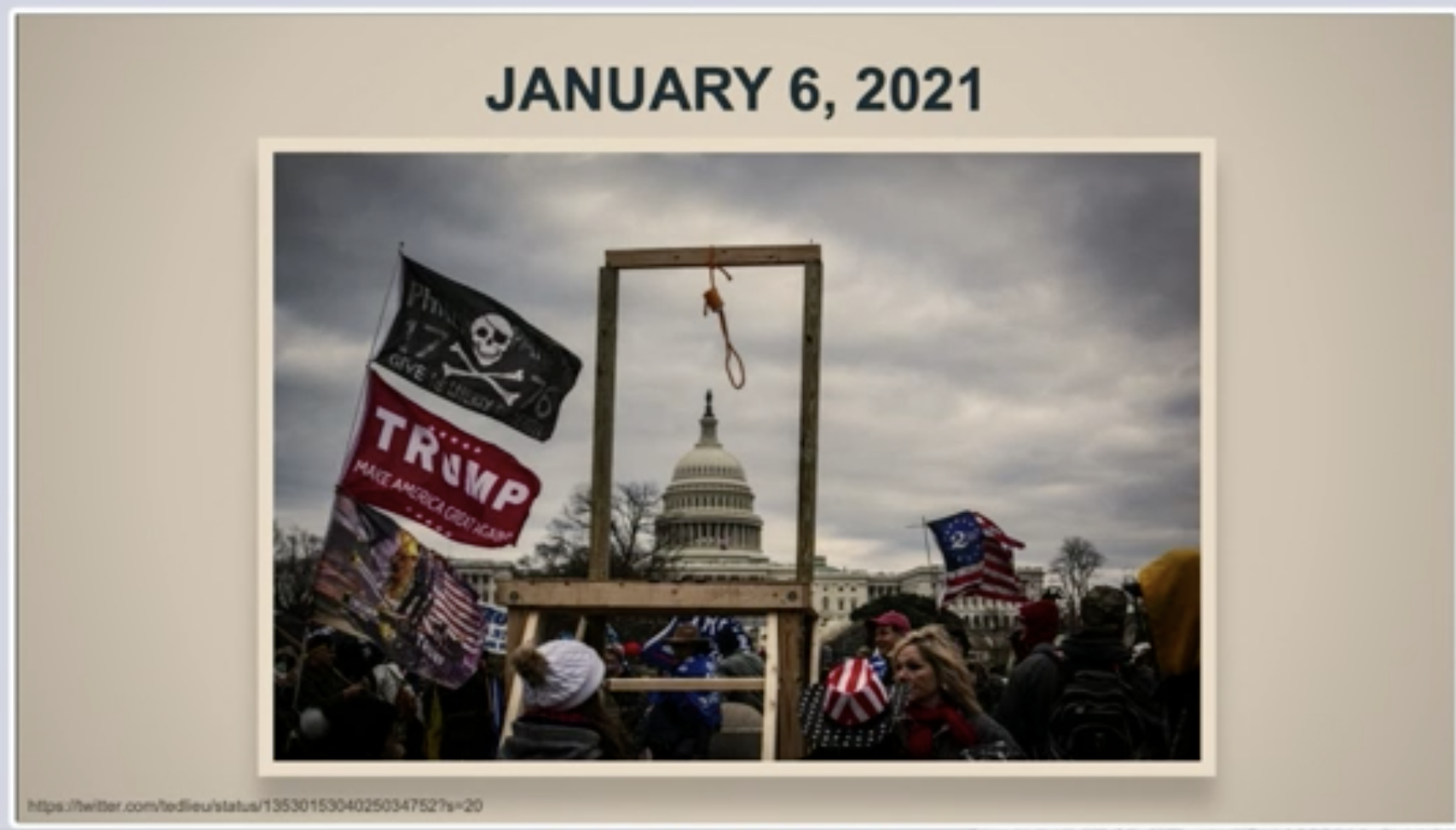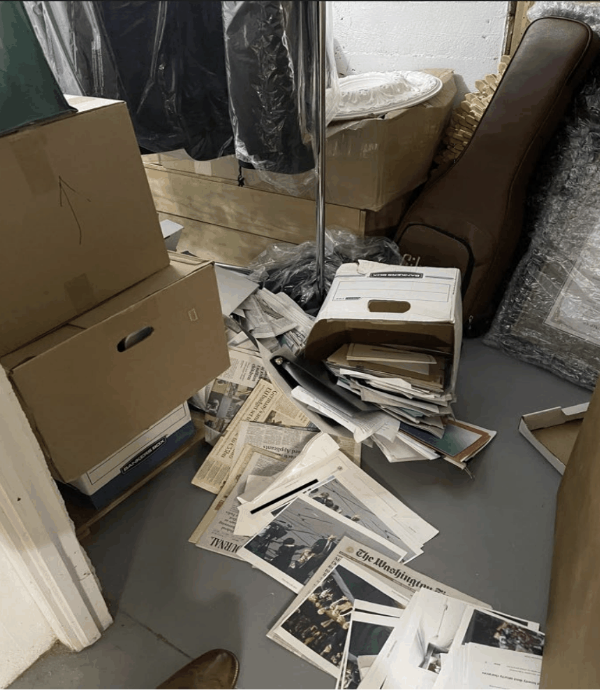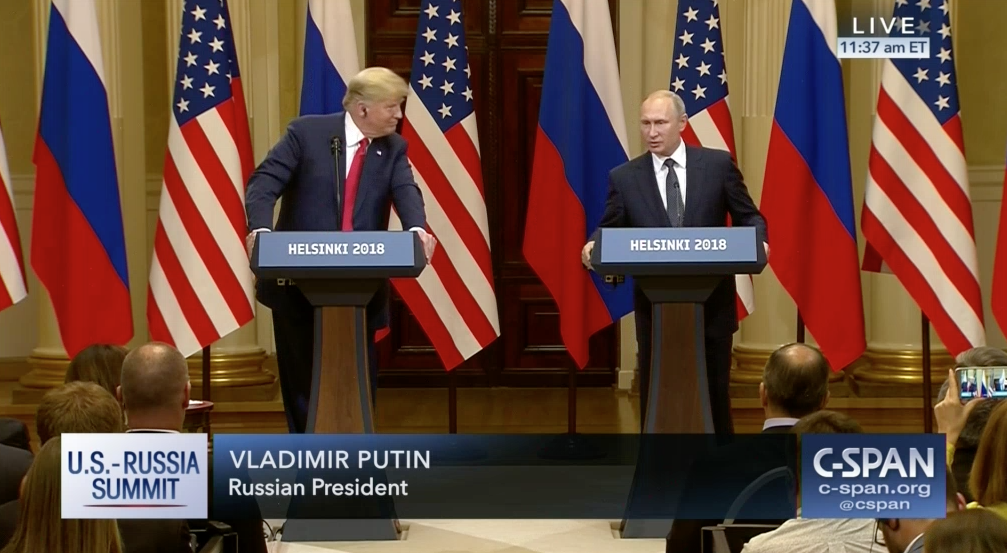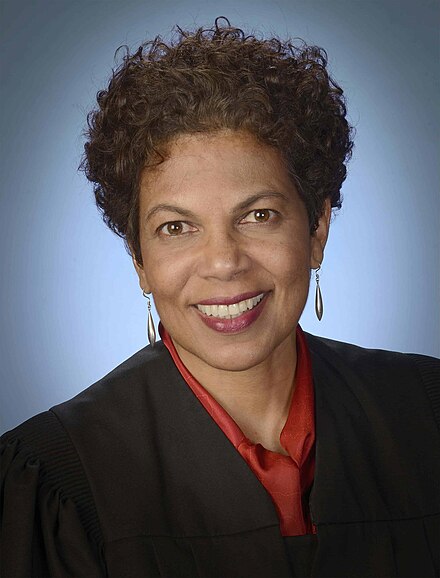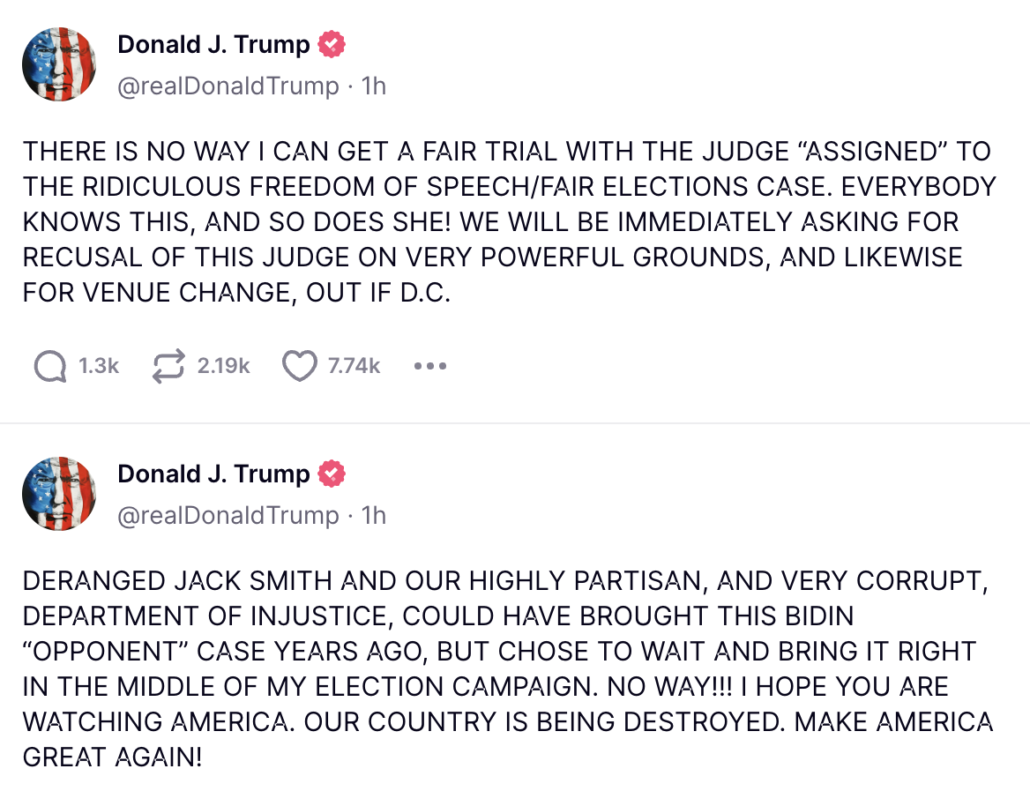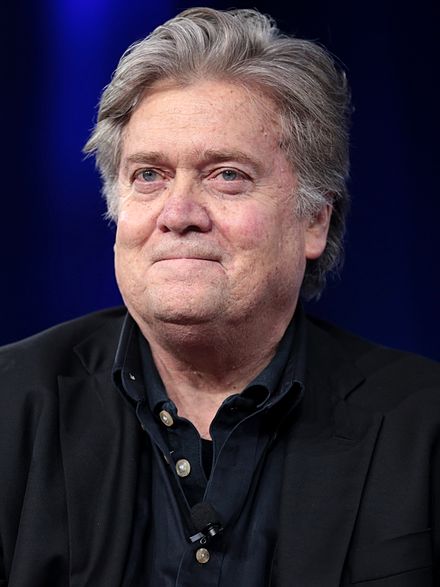“Like fatter Tony Soprano” Attending the Arraignment and “Effect[ing]” Liz Harrington’s Pregnancy
Two amusing phrases from yesterday’s news provide a wonderful opportunity to talk about how Trump will continue to manipulate his prosecution.
First, Peter Navarro continues to seek ways to stall his long-delayed trial on contempt charges, which is scheduled to start next month. In advance of his trial, Judge Amit Mehta has granted him an evidentiary hearing so Navarro can attempt to prove that the former President told him to invoke both testimonial immunity and executive privilege, as Trump did with Mark Meadows and Dan Scavino (which is almost certainly a big part of why they weren’t charged with contempt).
When granting Navarro the hearing, though, Mehta noted that Navarro has thus far not presented any evidence that Trump told him not to testify, and he’ll need to find “formal” evidence.
[T]he court does not at this time prejudge what type or manner of instruction from President Trump might suffice to constitute a “formal” assertion of privilege or immunity. See United States v. Navarro, No. 22-cr-200 (APM), 2023 WL 371968, at *2–3 (D.D.C. Jan. 19, 2023). The court previously left that question unanswered because Defendant had not come forward with any evidence of a presidential invocation. Id.; Jan. Hr’g Tr. at 12. Defendant’s burden will include showing that the claimed instruction to invoke was a “formal” one.
Now, Navarro is attempting to delay both hearings because Liz Harrington, Trump’s spox, is due to give birth.
The first two filings in this dispute (Navarro, DOJ) included redacted bits and exhibits explaining how Trump’s spokesperson could prove that Trump invoked testimonial immunity and executive privilege, though DOJ did make clear that they believe Harrington’s testimony is inadmissible. Navarro’s response provides more detail: He wants Harrington to describe how he wrote a press statement she could release claiming Trump had invoked executive privilege (but not testimonial immunity).
Along the way, he reveals that Harrington testified to the grand jury and DOJ believes his proffer of her testimony materially conflicts with what DOJ locked her into saying.
It’s clear from the Government’s Opposition that it would prefer that Ms. Harrington not testify at the evidentiary hearing.1 Although it claims that her testimony is “generally speaking not in dispute”, it challenges its relevance of the calls she had with Dr. Navarro and the email she received from him on February 9, 2022, the day the J6 Committee served its subpoena. Opp. n.1. Standing alone, Ms. Harrington’s testimony does not prove that former President Trump instructed Dr. Navarro to assert executive privilege in response to the Committee’s subpoena. But the testimony is corroborative of other evidence – including Dr. Navarro’s anticipated testimony – that he was following President Trump’s instructions when he notified the Committee that it should negotiate the privilege issue with its holder.2
Ms. Harrington will explain that after being served with the subpoena, Dr. Navarro called her and then followed up by sending the media statement he planned to publicly issue that day. The statement explained that President Trump had asserted executive privilege and noted that the J6 Committee should negotiate any waiver of the privilege with his attorneys and him. Ms. Harrington conveyed the statement to two of President Trump’s administrative assistants and, later that day, Dr. Navarro publicly released the statement. See Defense Exhibit 7
1 In its zeal to prosecute Dr. Navarro and keep Ms. Harrington from testifying, the Government has implicitly threatened her with perjury “if she intends to testify inconsistent with her grand jury testimony” and that she “must first waive her Fifth Amendment right not to incriminate herself.” Opp. at 3. This assertion is at odds with long-standing precedent that: “Our legal system provides methods for challenging the Government’s right to ask questions – lying is not one of them,” United States v. Wong, 431 U.S. 174, 178 (1977), and so, “[e]ven constitutionally explicit Fifth Amendment privileges do not exonerate affirmative false statements.” United States v. North, 708 F. Supp. 380, 383 (D.D.C. 1988) (citing Wong, 431 U.S. at 178). Regardless of whether Ms. Harrington could assert the Fifth Amendment to avoid what the government submits would be perjured testimony, the reality is that Mr. Harrington’s anticipated testimony is wholly consistent with her grand jury testimony – the government just failed to ask probative follow up questions of her at the time.
Then, Navarro’s lawyers — the lawyer he shares with Kash Patel and Walt Nauta, Stan Woodward, the lawyer he shares with Carlos De Oliveira, John Irving, and the lawyer he used to share with Trump himself, John Rowley — attempt to disclaim simply using Harrington’s pregnancy as an excuse for delay.
The Government alleges without any basis that Dr. Navarro’s request for continuance of the hearing is “strategic” and done for improper reasons. Opp. at 1-2. Leaving aside the personal attack on defense counsel, there is no plausible strategic reason for the request and the Government provides none – Ms. Harrington’s pregnancy is not effected by the timing of the filing of Dr. Navarro’s motion. No prejudice to the Government would result from a short continuance and it would be fundamentally unfair to Dr. Navarro to deny calling Ms. Harrington as a witness on his behalf. [my emphasis]
But along the way, because they used “effected” instead of “affected,” they literally deny that the act of filing Navarro’s motion did not cause Harrington’s pregnancy.
I’m sure it didn’t.
But it also appears to be the case that DOJ locked Harrington — who may be the only one in Trump’s camp that Navarro spoke to during the period when he was subpoenaed — into testimony about the substance of their communication. And now Navarro is trying to admit his own hearsay to prove that Trump, absent any written filing, told Navarro to invoke both testimonial immunity (of which there’s no known evidence) and to raise executive privilege in the same informal way he did with Steve Bannon, which did not work for Bannon at trial but which is the substance of his appeal.
Mehta has called a pre-hearing hearing late this afternoon to sort all this out.
That phrase — “Ms. Harrington’s pregnancy is not effected by the timing of the filing of Dr. Navarro’s motion” would have been my favorite Trump-related phrase yesterday, if not for the description of Boris Epshteyn in this story of how he allegedly molested two women after getting drunk and belligerent at a bar in Scottsdale in 2021.
“We have a high tolerance of people like being weird, but that went above and beyond,” she said, adding that the man grabbed the women about 10 times. “I was like, stop touching my sister. Stop touching me. Stop touching my friends.”
Police asked the older sister to describe Epshteyn.
“Fat, ugly, like drooping face. White Ralph Lauren Polo,” she said. “Like fatter Tony Soprano.”
An officer asked: “Would you be willing to press charges?”
She responded: “Yes. (Expletive) that guy.”
The NYT — including Maggie Haberman — had reported directly from the arrest report in a beat sweetener burying this and even more damning criminal exposure earlier this year, but had left out the fat part.
I’m using the phrase “Like fatter Tony Soprano” as my excuse to pick up an observation that William Ockham made yesterday about DOJ’s proposed schedule for a Trump trial on the January 6 charges.
Furthermore, the defendant and his counsel have long been aware of details of the Government’s investigation leading to his indictment, having had first contact with Government counsel in June 2022. Indeed, at his initial appearance, the defendant was accompanied by an attorney familiar with certain relevant pre-indictment information. In sum, the defendant has a greater and more detailed understanding of the evidence supporting the charges against him at the outset of this criminal case than most defendants, and is ably advised by multiple attorneys, including some who have represented him in this matter for the last year.
In addition to noting that Trump’s attorneys have been aware of the course of this investigation because of repeated contacts with prosecutors going back to June 2022 — including Executive Privilege challenges to the testimony of Marc Short, Greg Jacob, Pat Cipollone, Pat Philbin, Mark Meadows, John Ratcliffe, Robert O’Brien, Ken Cuccinelli, and Mike Pence — it also noted that “an attorney familiar with certain relevant pre-indictment information” accompanied him to his arraignment.
I agree with Ockham’s supposition that that’s a reference to Boris “like fatter Tony Soprano” Epshteyn. Boris attended the arraignment — as he has some or all of Trump’s — but was not an attorney of record.
Back in April, before Rudy or Mike Roman or Bernie Kerik did so, Boris spent two days in interviews with Jack Smith and his prosecutors in what the press got told was a “proffer.”
The interview was largely focused on the efforts by former President Donald Trump and his allies to overturn Trump’s 2020 election loss. The second day of questioning was planned in advance, the sources said.
Epshteyn did not immediately respond to a request for comment from ABC News.
Prosecutors’ questions focused around Epshteyn’s interactions with former Trump attorneys Rudy Giuliani, Kenneth Chesebro and John Eastman, in addition to Trump himself, according to sources.
If the allusion in the proposed schedule is a reference to Epshteyn’s interviews, it confirms my general suspicion that Smith is using proffers as a way to get key subjects of the investigation on the record, rather than necessarily flipping them. It suggests that Smith is willing to show a few of the cards he has — at least on the prosecution focused largely on facts that were already public last year — in order to lock key subjects in on their testimony, just as DOJ would have been doing with Liz Harrington’s grand jury appearance.
But because Todd Blanche is an attorney of record for both Trump and Boris, this proffer would have been an especially obvious way for Trump to obtain information about the prosecution against him. In both the January 6 case and the stolen documents one, Boris is playing both a suspected co-conspirator and advisor on how to blow up the prosecution for political gain.
And that is why, I suspect, DOJ is being so particular about whether “volunteer attorneys” might include co-conspirators who also happen to be lawyers.
Without a clearly defined relationship of employment or privilege, this language is boundless. For example, several co-conspirators are identified as attorneys, whom the defense might interpret as “other attorneys assisting counsel of record.” The Court should not accept the edit.
The method to both of these defense ploys is the same. It rests on an inter-locking and wildly conflicted set of attorney relationships to create — in first instance — an omertà leading many key witnesses to give partial testimony which, as both cases, plus Navarro’s, move toward trial, will evolve into an effort to rework existing sworn testimony to create some flimsy story for Trump or Navarro to use to attempt to stay out of prison. This is what DOJ has spent much of the last 14 months preparing for: Trump’s attempt to move the goalposts once he discovered how much of the truth prosecutors had uncovered.
It’s not, just, that DOJ has to try the former President in at least two venues, an already unprecedented task. It’s that the entire criminal gang is gambling that if they just get beyond the election, any and all lies can be excused in a wave of pardons like Trump used to escape his Russian exposure.
Update: CNN’s Katelyn Polantz suggested that the reference to lawyer accompanying Trump may be Evan Corcoran. Corcoran was a part of all the sealed proceedings going back 9 months.

